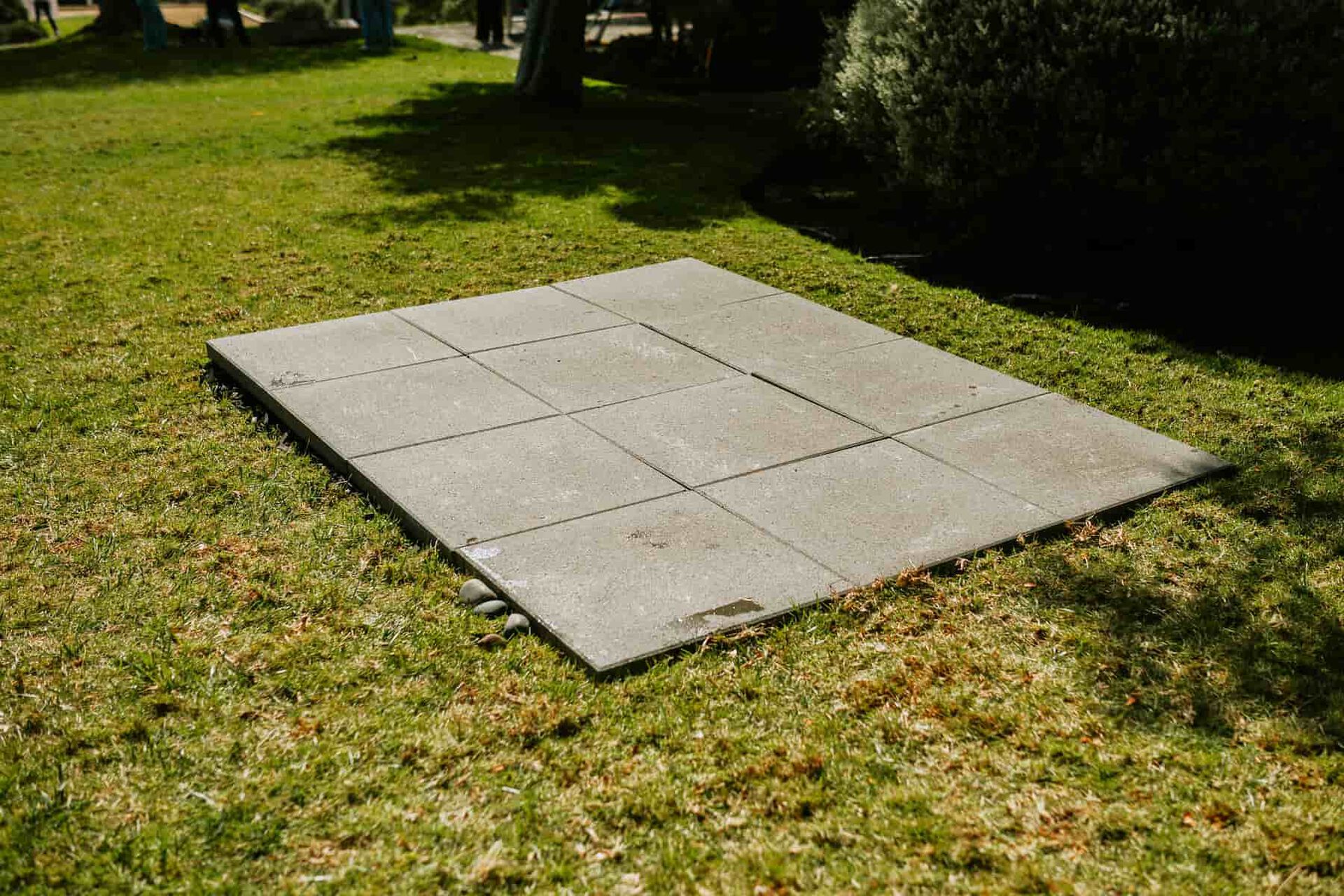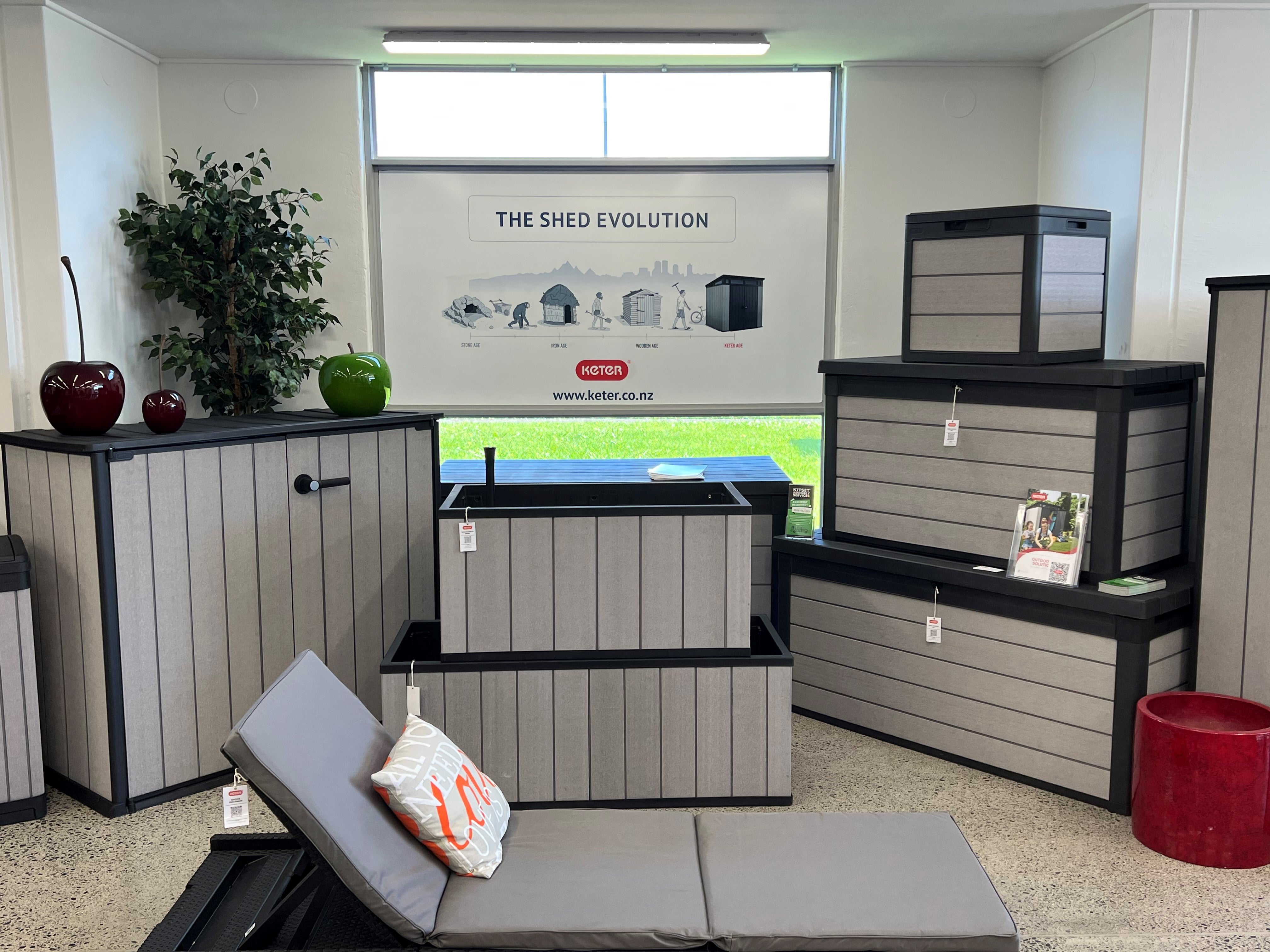If you own a shed or are thinking about buying one, one of the best ways to get the most out of it is to ensure it has a solid foundation. Rather than building your shed directly on the ground, a secure surface sets your garden shed up for a long life, protecting it against moisture and keeping it strong. But how do you know which foundation to choose? Let’s cover some of the most important steps, from picking a foundation material suitable for your shed type to installation tips.
Why your shed foundation matters
A supportive foundation is integral to keeping the structure of your shed intact. If the soil underneath your shed erodes or experiences frost heave from freezing temperatures, or simply changes over time, your shed can warp and lose its supportive shape. This can be problematic if you’re storing heavy loads in your shed, as the weight distribution becomes uneven.
The good news? If you’re working with a Keter shed made from resin, a cutting-edge composite material, your shed won’t warp, shift, or crack! However, moisture damage is one of the biggest problems that all sheds face. This occurs when water pools under your shed or around its edges. Over time, ground moisture can rot your shed, leading to expensive maintenance and even ruining your belongings, meaning that a good shed foundation is very important.

Common types of shed foundations
Shed foundation options sit in two categories: on-grade foundations and frost-proof foundations.
On-grade foundations are easier and quicker to install because they sit directly on the surface of the ground. They are typically used for small to medium-sized sheds, especially in mild climates where frost heave is not as much of a concern.
Frost-proof foundations extend below the frost line, making them more resistant to ground movement caused by freeze-thaw cycles. These are better suited for larger sheds or cold climates such as the South Island of New Zealand, and offer a more durable solution.
Some of the most common foundations and their benefits include:
Wooden skid foundations (on-grade):
- Generally affordable
- Accurate levelling is key
- Good fit for small and medium-sized sheds
- Movable, transportable, and considered a temporary solution
- Commonly used on lifestyle blocks and farms where relocatable sheds are neede
Concrete slab foundations (on-grade):
- Higher cost
- Provides a durable base
- Tougher to install, but creates a permanent foundation
- Best suited to large sheds that require more stability
- Ideal for urban workshops or heavy-use storage sheds
Concrete brick foundations (on-grade or frost-proof):
- Low to moderate cost
- Suitable for small and medium-sized sheds
- DIY-friendly, simple to install when ground is level
- Supports good airflow and offers easy adjustments
- Commonly used for home garden sheds or tool storage sheds
Timber frame foundations (on-grade):
- Low to moderate cost
- Best for sloped or uneven terrain
- Provides a stable, elevated base for light to medium sheds
- Raises the shed off the ground for better airflow and moisture protection
- Used in areas with poor drainage, on slightly uneven ground or sloped sites

Factors to consider when choosing a foundation
1. The shed itself
The foundation style you choose will depend on your shed’s material, size, and weight. If your backyard shed is large and used to store heavy equipment like mowers or jet skis, it’ll have different requirements than a small shed used for basic garden tool storage.
2. Budget
Naturally, your budget plays a big part in your decision-making. There’s no need to overspend when you can choose a cost-effective option that works just as well. For example, a concrete pad is a great long-term investment to ensure your large shed remains sturdy, but this same concrete foundation may not be necessary for a smaller shed, where a cheap and easier-to-install wooden one may suffice.
3. Climate, environment and terrain
If your shed is exposed to harsh weather conditions like freezing temperatures and rain, concrete slabs will provide the necessary stability that other foundations may not match. On the other hand, wooden foundations will perform better in dry climates where there is a lower risk of moisture damage. For sloped terrain, concrete piers are best as they can be adjusted to accommodate different angles.
Preparing the ground for your foundation
Step 1: Pick an ideal location for your shed surface, taking into account accessibility, where the nearest power and water sources are, and terrain conditions.
Step 2: Clear the area of any vegetation, roots, and debris from trees. Level the ground as much as possible so you have a stable base—this is a critical step!
Step 3: Measure and mark the chosen area, double-checking the dimensions of your shed so that your foundation is big enough to support it.
Step 4: Make sure the area has proper drainage by sloping the ground slightly away from the shed site.
Step 5: Compact the soil before building the foundation to create a ground-level base.
Step 6: Consider laying down landscape fabric or a weed barrier. This helps prevent weeds or grass from growing under and around your shed and deters pests.
Step 7: If you’re not pouring a concrete slab, adding a 3-6 inch deep layer of compacted gravel helps with drainage, stability, and levelling. Consider installing a French drain if the area is prone to pooling water.
Step 8: After compacting, double-check levelness in multiple directions using a long level or a laser level to ensure your shed doors will close properly.
Note: Always double-check building codes before building structures. Typically, sheds that are one-story, less than 30 m2, and without plumbing or cooking facilities don’t require a building consent in New Zealand.
Installation: tips & mistakes to avoid
Whether you're building a garden shed foundation in suburban Auckland or on a rural property in Canterbury, getting the method right is key to a long-lasting foundation.
A DIY approach can save money and be a satisfying project, especially if you already have the tools and some basic building or construction experience. However, it’s worth getting the support of professionals if you’re working with a large shed or concrete foundation and if the site is on a slope or has drainage issues. Labour and material costs vary across New Zealand, but going DIY can reduce your expenses significantly, though it does require a solid time commitment, often a weekend or more, depending on the foundation type.
Common mistakes include underestimating the importance of site prep, failing to clear vegetation properly, not compacting the soil, or allowing for drainage. These oversights can lead to water damage over time. Taking the time to prepare your site well will save you hassle (and cash) in the long run.

Maintaining your shed foundation over time
Keeping your shed base in good condition doesn’t require a lot of work, but regular checks can prevent bigger problems down the track.
In wetter parts of New Zealand, like the West Coast or Waikato, keeping an eye on drainage is especially important. Clear away leaves and debris that could block water flow and make sure the ground still slopes away from the shed. In autumn and spring, check that your foundation hasn’t been affected by heavy rain or ground movement and that no pests have burrowed underneath. If you notice your shed doors not closing properly, visible cracks, or sagging corners, those are signs the foundation may need repairs.
It's important to avoid watering plants or grass directly next to the shed. Keep at least a metre of clearance to prevent water from pooling near the base or seeping in through the floor line, which could lead to moisture damage inside the shed.
Staying on top of these small tasks will keep your shed dry, level, and stable for years to come.
Enjoy years of trouble-free storage with a Keter shed
A secure shed foundation sets the stage for years of reliable, low-maintenance storage. By choosing the right location, ensuring proper drainage, and taking the time to prepare and level the ground, you’re protecting your shed from moisture damage and long-term wear.
The key is matching the foundation type to your specific needs—wooden bases work well for lighter, smaller sheds, while concrete slabs offer unbeatable durability for larger or permanent structures.
With the right surface in place, you’ll be set up for a shed that stands strong through all seasons of Kiwi weather. Looking for the perfect shed? Browse Keter’s shed collection or contact us for help.



